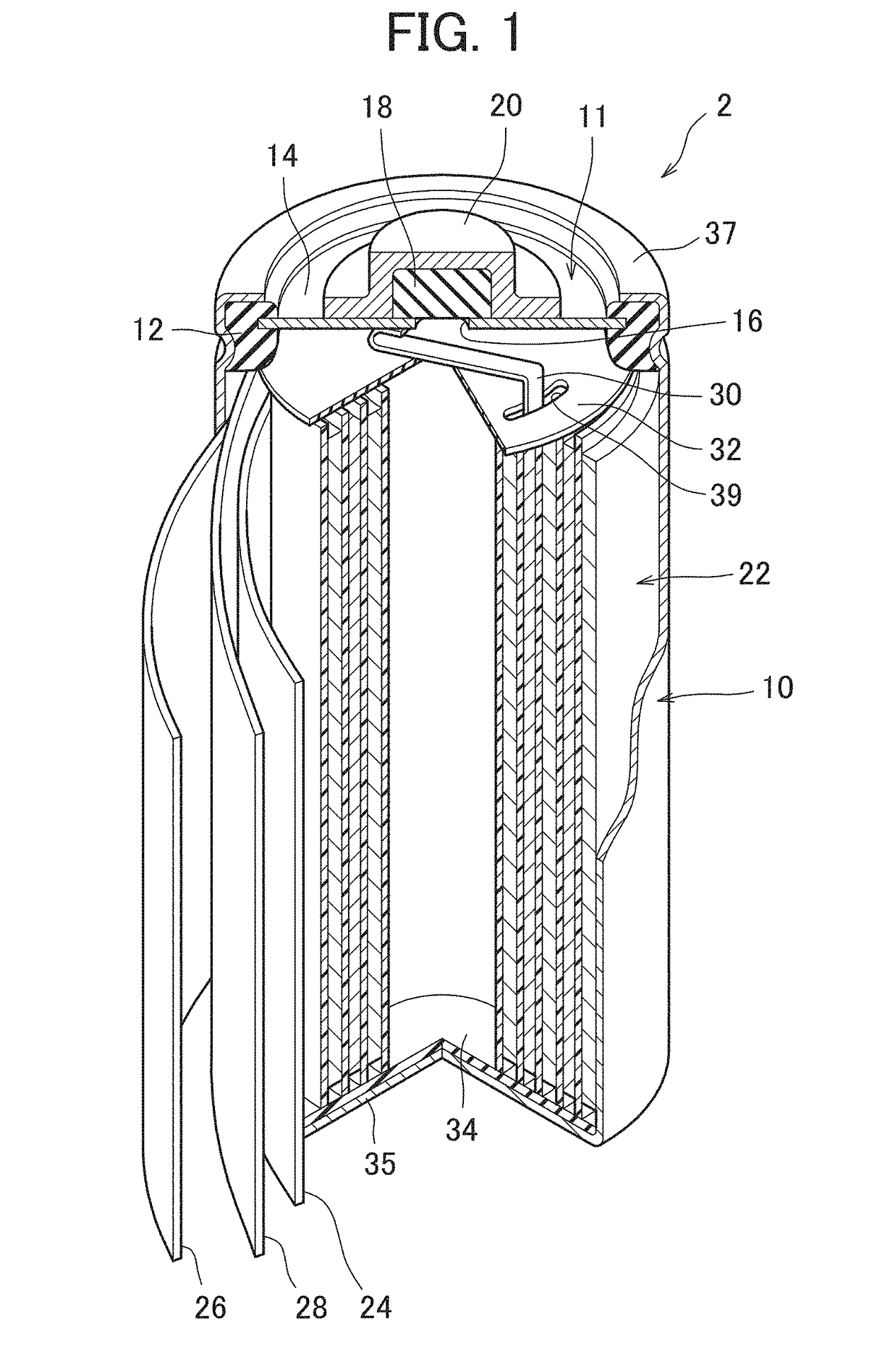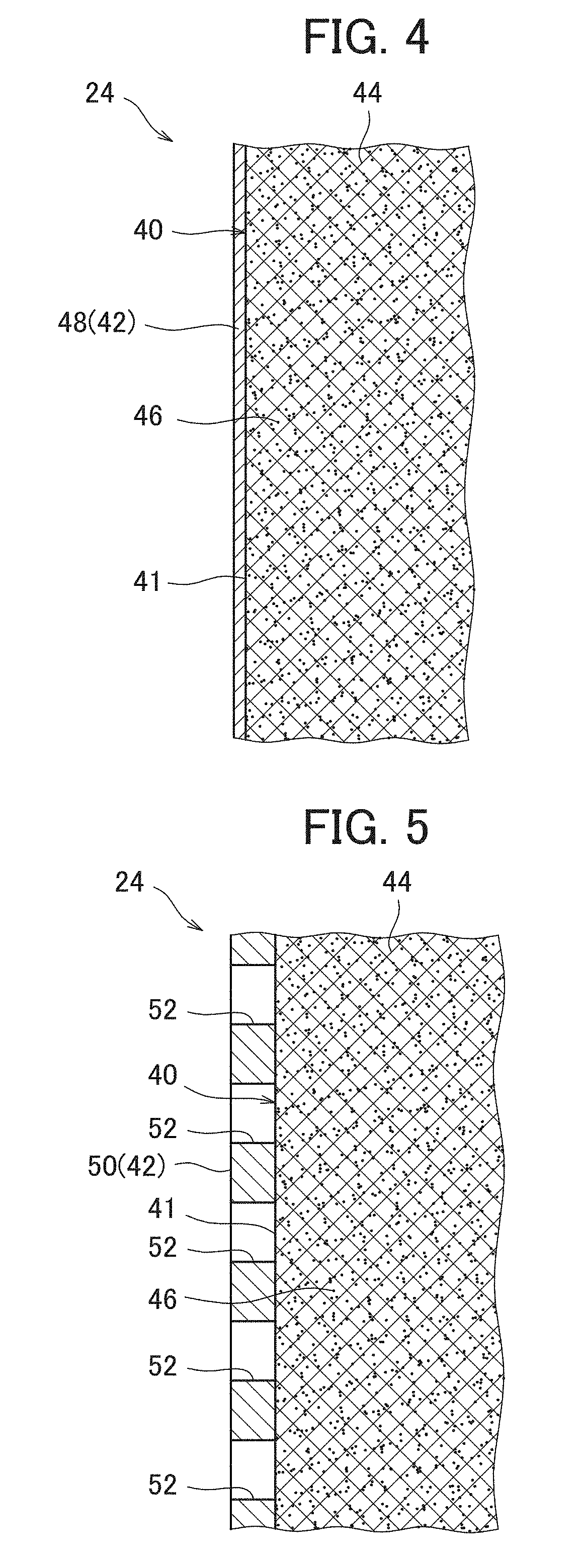Non-sintered positive electrode for alkaline secondary battery and alkaline secondary battery including non-sintered positive electrode
a technology of non-sintered positive electrodes and alkaline secondary batteries, which is applied in the direction of cell components, electrochemical generators, and nickel accumulators, etc., can solve the problems of limited capacity, difficult to increase the porosity of substrates, and difficult to increase the amount of nickel hydroxide as positive electrodes
- Summary
- Abstract
- Description
- Claims
- Application Information
AI Technical Summary
Benefits of technology
Problems solved by technology
Method used
Image
Examples
example 1
(1) Production of Positive Electrode
[0064]Nickel sulfate, zinc sulfate and cobalt sulfate were measured such that 3 mass % zinc and 1 mass % cobalt were obtained with respect to nickel. They were added in 1 N sodium hydroxide aqueous solution containing ammonium ions, and thereby, a mixed aqueous solution was prepared. While the obtained mixed aqueous solution was being stirred, 10 N sodium hydroxide aqueous solution was gradually added in the mixed aqueous solution, and was reacted. During the reaction, pH was stabilized at 13 to 14, and a base particle containing mainly nickel hydroxide and having zinc and cobalt dissolved was made.
[0065]The obtained base particle was washed in ten times its volume of pure water three times, and thereafter, dewatering and drying were performed. The obtained base particle had a spherical shape with an average particle diameter of 10 μm.
[0066]Next, the obtained base particle was input in an ammonia aqueous solution, and a cobalt sulfate aqueous solu...
example 2
[0081]A nickel hydride secondary battery 2 in the usable state was produced in the same way as Example 1, except that a positive electrode 24 in which a surface layer 42 formed of a lath metal of nickel existed on the surface part of the positive electrode body 40 was produced by performing the rolling in a state where the lath metal of nickel was placed on the surface of the intermediate product of the positive electrode and not performing the vacuum deposition of nickel.
[0082]The lath metal used in the example had a mesh shape formed by providing slits on a foil made of a nickel having a purity of 99.5% and extending the foil, and included skeleton parts of the mesh and rhombic through-holes (openings) formed among the skeleton parts. As the lath metal, a lath metal in which the thickness of the foil was 0.02 mm, the long side size of the opening was 1.0 mm, the short side size of the opening was 0.5 mm and the width of the skeleton part was 0.08 mm was used.
PUM
 Login to View More
Login to View More Abstract
Description
Claims
Application Information
 Login to View More
Login to View More - Generate Ideas
- Intellectual Property
- Life Sciences
- Materials
- Tech Scout
- Unparalleled Data Quality
- Higher Quality Content
- 60% Fewer Hallucinations
Browse by: Latest US Patents, China's latest patents, Technical Efficacy Thesaurus, Application Domain, Technology Topic, Popular Technical Reports.
© 2025 PatSnap. All rights reserved.Legal|Privacy policy|Modern Slavery Act Transparency Statement|Sitemap|About US| Contact US: help@patsnap.com



